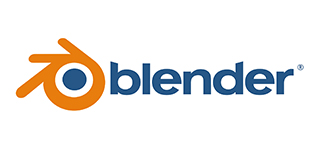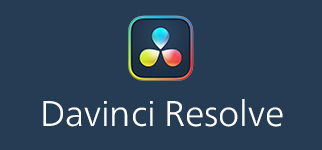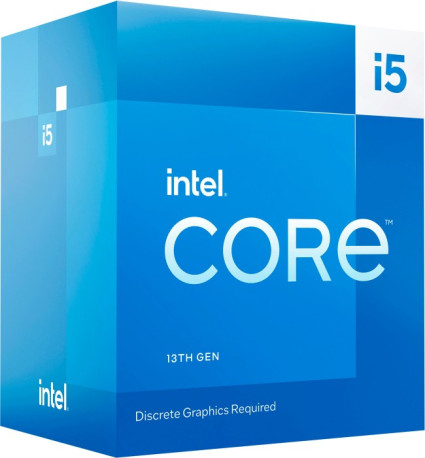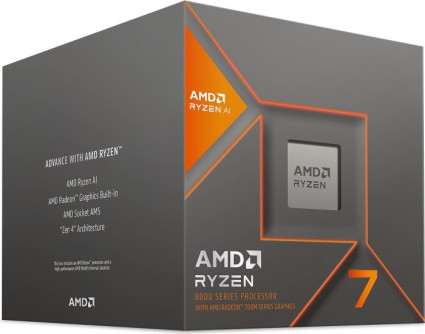
Intel Core i5-13400F vs. AMD Ryzen 7 8700G
In diesem Vergleich von Intel Core i5-13400F versus AMD Ryzen 7 8700G vergleichen wir die technischen Daten der beiden GPUs. Welche Grafikkarte ist schneller? Hier gibt es FPS & Benchmarks in Gaming und Anwendungen. Außerdem Daten zu Verbrauch, Effizienz (FPS pro Watt) und Preis-Leistung (FPS pro Euro).

Allgemeine Informationen
| Günstigster Preis |
|
|
| Serie | Intel Core i-13000 | Ryzen 8000 |
| Chip-Architektur | Golden Cove oder Raptor Cove (P-Core) + Gracemont (E-Core) | Zen 4 |
| Codename | Raptor Lake-S | Phoenix |
| Produktname | Intel Core i5-13400F | AMD Ryzen 7 8700G |
Spezifikationen
Die Anzahl der Rechenkerne, die maximale Taktrate und die Größe des Cache können sich auf die Leistung in Spielen und Anwendungen auswirken. Mit 10 Kernen bietet der Intel Core i5-13400F deutlich mehr Kerne als der AMD Ryzen 7 8700G mit 8 Rechenkernen. Der maximale Takt liegt beim Intel Core i5-13400F mit 4.60 GHz etwas niedriger als beim AMD Ryzen 7 8700G mit 5.10 GHz. Der Cache ist beim Intel Core i5-13400F mit 9.5 MB L2-Cache + 20 MB L3-Cache zu 8 MB L2-Cache + 16 MB L3-Cache deutlich höher als beim AMD Ryzen 7 8700G.
| Kerne (Gesamt) | 10 | 8 |
| Anzahl P-Cores | 6C | 8C |
| Anzahl E-Cores | 4c | - |
| Basis-Takt | 2.50 GHz | 4.20 GHz |
| Takt P-Cores | 2.50 GHz | 4.20 GHz |
| Takt E-Cores | 1.80 GHz | - |
| Turbo-Takt | 4.60 GHz | 5.10 GHz |
| Turbo P-Cores | 4.60 GHz | 5.10 GHz |
| Turbo E-Cores | 3.30 GHz | - |
| Gesamter L2-Cache | 9.5 MB | 8 MB |
| Gesamter L3-Cache | 20 MB | 16 MB |
| Fertigung | Intel 7 | TSMC 4 nm |
| Rechenleistung | - | - |
| Leistungsaufnahme (TDP) | 65W (Processor Base Power) 148W (Maximum Turbo Power) |
65W 45W cTDP-down |
Mainboard-Kompatibilität
Während der Intel Core i5-13400F den Intel 1700 Sockel nutzt, ist der AMD Ryzen 7 8700G mit Mainboards für den Sockel AMD AM5 kompatibel. Die genaue Chipsatz-Eignung und die unterstützten PCIe-Lanes können Sie der Tabelle entnehmen.
| Sockel | Intel 1700 | AMD AM5 |
| Chipsatz-Eignung | B660, B760, H610, H610E, H670, H770, Q670, Q670E, R680E, W680, Z690, Z790 | A620, B650, B650E, B840, B850, X670, X670E, X870, X870E (modellabhängig: PRO 600, PRO 665, X600) |
| PCIe-3.0-Lanes | - | - |
| PCIe-4.0-Lanes | 4x | 20x (verfügbar: 16) |
| PCIe-5.0-Lanes | 16x | - |
RAM-Kompatibilität
Während Sie beim Intel Core i5-13400F bis zu 192 GB vom Typ DDR4/DDR5 im Dual Channel verbauen können, unterstützt der AMD Ryzen 7 8700G bis zu 256 GB DDR5 Arbeitsspeicher.
| Speicher-Controller | DDR4/DDR5 | DDR5 |
| Anzahl Speicherkanäle | Dual Channel | Dual Channel |
| max. Speichermenge | 192 GB | 256 GB |
| ECC-Unterstützung | - | - |
Grafik
| iGPU | - | ✓ |
| iGPU-Modell | - | AMD Radeon 780M |
| iGPU-Takt | - | 2,90GHz |
| iGPU-Einheiten | - | 12CU/768SP |
| iGPU-Rechenleistung | - | 4.45 TFLOPS (FP32) |
| iGPU-Architektur | - | RDNA 3, Codename "Phoenix" |
| iGPU-Interface | - | DP 2.1, HDMI 2.1 |
| iGPU-Funktionen | - | 4x Display Support, AMD Eyefinity, AMD FreeSync 2, AV1 encode/decode, H.265 encode/decode, VP9 decode, DirectX 12.1, OpenGL 4.5, Vulkan 1.0 |
Sonstiges
| Freier Multiplikator | - | ✓ |
| Stepping | B0/C0, Spec Code: SRMBG/SRMBN | PHX-A1 |
| Heatspreader-Kontaktmittel | Metall/verlötet | - |
| Temparatur max. | 100°C (Tjunction) | 95°C (Tjmax) |
| Fernwartung | - | - |
| Einführung | 2023/Q1 (3.1.2023) | 2024/Q1 (8.1.2024) |
| Herstellergarantie | 5 Jahre bei Intel® Boxed-Prozessoren durch erweiterte Garantieunterstützung (Info EN) | 3 Jahre bei AMD® Boxed-Prozessoren (Info EN) |
CPU-Funktionen
| AES-NI | ✓ | ✓ |
| AVX | ✓ | ✓ |
| AVX2 | ✓ | ✓ |
| Boot Guard | ✓ | - |
| CET | ✓ | - |
| DL Boost | ✓ | - |
| EIST | ✓ | - |
| GNA 3.0 | ✓ | - |
| Idle States | ✓ | - |
| Instruction Set | ✓ | - |
| ISM | ✓ | - |
| MBEC | ✓ | - |
| Optane Memory Support | - | - |
| OS Guard | ✓ | - |
| Secure Key | ✓ | - |
| Speed Shift | ✓ | - |
| SSE4.1 | ✓ | ✓ |
| SSE4.2 | ✓ | ✓ |
| Thermal Monitoring | ✓ | - |
| VMD | ✓ | - |
| VT-d | ✓ | - |
| VT-x | ✓ | - |
| VT-x EPT | ✓ | - |
| XD Bit | ✓ | - |
Spiele

- AMD Ryzen 7 8700GAVG111.15 %1%110.33 %
- Intel Core i5-13400FAVG100.00 %1%100.00 %

- Intel Core i5-13400FAVG155.1 FPS1%111.6 FPS
- AMD Ryzen 7 8700GAVG221.4 FPS1%165.1 FPS

- Intel Core i5-13400FAVG436.9 FPS1%248.5 FPS
- AMD Ryzen 7 8700GAVG478.7 FPS1%279.1 FPS

- Intel Core i5-13400FAVG120.8 FPS1%83.8 FPS
- AMD Ryzen 7 8700GAVG147.7 FPS1%92.8 FPS

- Intel Core i5-13400FAVG170.4 FPS1%119.6 FPS
- AMD Ryzen 7 8700GAVG164 FPS1%118.7 FPS

- Intel Core i5-13400FAVG120.9 FPS1%89.3 FPS
- AMD Ryzen 7 8700GAVG119 FPS1%87.1 FPS

- Intel Core i5-13400FAVG187.7 FPS1%123.5 FPS
- AMD Ryzen 7 8700GAVG207.6 FPS1%129.4 FPS

- Intel Core i5-13400FAVG69.4 FPS1%52.1 FPS
- AMD Ryzen 7 8700GAVG75.5 FPS1%58.1 FPS

- Intel Core i5-13400FAVG211.8 FPS1%128.1 FPS
- AMD Ryzen 7 8700GAVG213 FPS1%126.3 FPS

- AMD Ryzen 7 8700GAVG0.83 FPSIntel Core i5-13400FAVG1.48 FPS

- AMD Ryzen 7 8700GAVG3.28 FPSIntel Core i5-13400FAVG2.79 FPS
Produktivität
Produktivität

- AMD Ryzen 7 8700GAVG120.47 %Intel Core i5-13400FAVG100.00 %

- AMD Ryzen 7 8700GPKT118169 PunkteIntel Core i5-13400FPKT82986 Punkte

- AMD Ryzen 7 8700GPKT1310 PunkteIntel Core i5-13400FPKT1230 Punkte

- AMD Ryzen 7 8700GPKT835 PunkteIntel Core i5-13400FPKT714 Punkte

- AMD Ryzen 7 8700GSEK300 SekundenIntel Core i5-13400FSEK420 Sekunden

- AMD Ryzen 7 8700GPKT1026 PunkteIntel Core i5-13400FPKT827 Punkte

- AMD Ryzen 7 8700GPKT2607 PunkteIntel Core i5-13400FPKT2387 Punkte

- AMD Ryzen 7 8700GPKT14334 PunkteIntel Core i5-13400FPKT12541 Punkte

- AMD Ryzen 7 8700GSEK73 SekundenIntel Core i5-13400FSEK94 Sekunden




